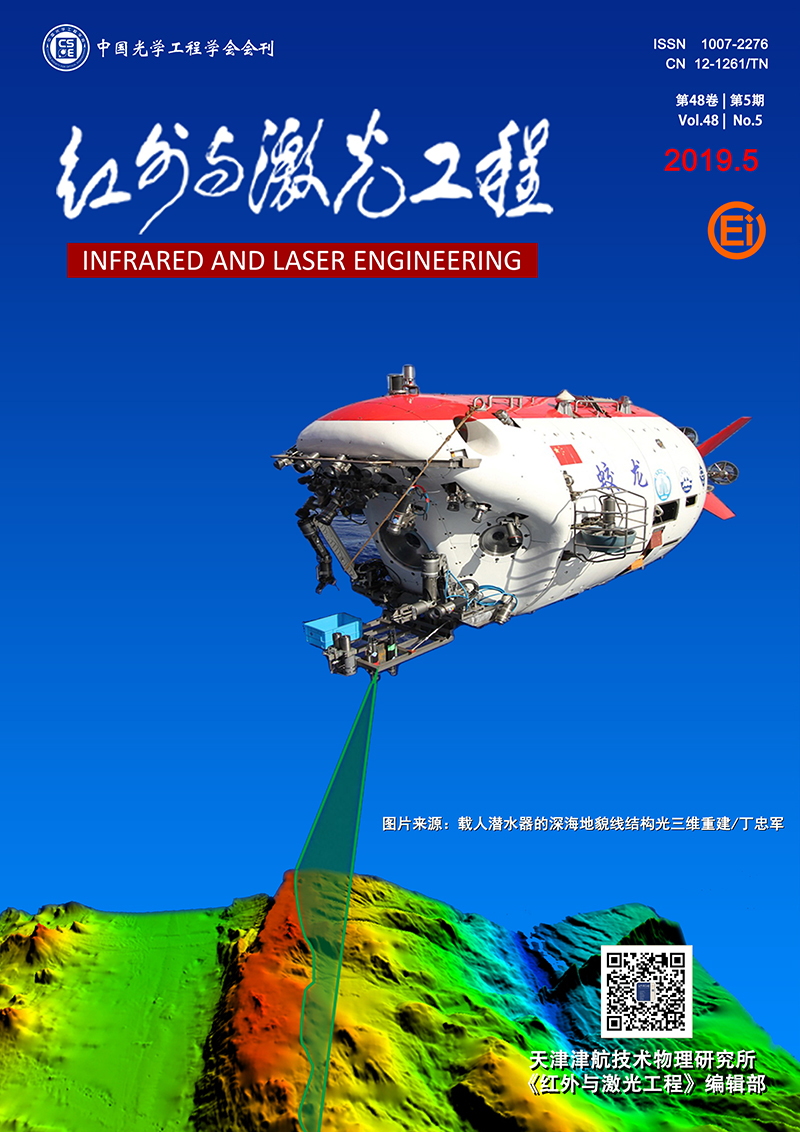|
[1]
|
Feng Feng, He Shaobo, Yuan Xiaodong, et al. Progress in research on damage character-istics of optical elements induced by pollutants[J]. Laser and Infrared, 2012, 42(10):1098-1102. (in Chinese)冯峰, 贺少勃, 袁晓东, 等. 污染物致光学元件损伤特性研究进展[J]. 激光与红外, 2012, 42(10):1098-1102. |
|
[2]
|
Baker L R. Opto-mechanical systems design[J]. Journal of Modern Optics, 1986, 33(11):1335-1336. |
|
[3]
|
Liu Tianhua, Jiang Zongfu, Liu Zejin, et al. Method of evaluating optical quality of aerodynamic windows for high energy[J]. High Power Laser and Particle Beams, 2002, 14(2):193-196. (in Chinese)刘天华, 姜宗福, 刘泽金, 等. 高能激光器气动窗口光束质量的评价方法探讨[J]. 强激光与粒子束, 2002, 14(2):193-196. |
|
[4]
|
Fan Da, Ming Xing, Liu Xinyue, et al. Thermal optical analysis and design of optical window in high altitude and high-speed environment[J]. Infrared and Laser Engineering, 2016, 45(8):0818001. (in Chinese)范达, 明星, 刘昕悦, 等. 高空高速环境热光学分析及光学窗口设计[J]. 红外与激光工程, 2016, 45(8):0818001. |
|
[5]
|
Feng Zhiqing, Bai Lan, Zhang Zengbao, et al. Thermal deformation compensation of high energy laser reflector[J]. Optics and Precision Engineering, 2010, 18(8):1781-1787. (in Chinese)冯志庆, 白兰, 张增宝, 等. 高能激光反射镜热变形补偿[J]. 光学精密工程2010, 18(8):1781-1787. |
|
[6]
|
David V. Laser weapons development by 2023[R]. U.S:Department of Defense Information/FIND, 2016. |
|
[7]
|
Zhang Kuo, Chen Fei, Li Ruolan, et al. Analysis on thermal performance of output window in high power CO2 laser[J]. Infrared and Laser Engineering, 2017, 46(2):0205005. (in Chinese)张阔, 陈飞, 李若斓, 等. 大功率CO2激光器输出窗口热性能分析[J]. 红外与激光工程, 2017, 46(2):0205005. |
|
[8]
|
Li Yiyong, Wang Jianhua, Li Zhi. Development trend of high-energy laser weapons[J]. Journal of Ordnance and Equipment Engineering, 2017, 38(6):1-6. (in Chinese)李怡勇, 王建华, 李智. 高能激光武器发展态势[J]. 兵器装备工程学报, 2017, 38(6):1-6. |
|
[9]
|
Peng Yufeng, Sheng Zhaoxia, Zhang Hu, et al. Influence of thermal deformations of the output windows of high-power laser systems on beam characteristics[J]. Applied Optics, 2004, 43(35):6465-6472. |
|
[10]
|
Liu Xutang, Gao Yunguo, Shao Shuai, et al. Design and test of high energy laser emission window of large aperture and wide band[J]. Optics and Precision Engineering, 2014, 22(7):1834-1841. (in Chinese)刘旭堂, 高云国, 邵帅, 等. 大口径宽波段高能激光发射窗口的设计与测试[J]. 光学精密工程, 2014, 22(7):1834-1841. |
|
[11]
|
Zhou Chao, Yang Hongbo, Wu Xiaoxia, et al. Wind load analysis of 1.2 m telescope[J]. Infrared and Laser Engineering, 2011, 40(5):889-893. (in Chinese)周超, 杨洪波, 吴小霞, 等. 1.2 m望远镜风载作用分析[J].红外与激光工程, 2011, 40(5):889-893. |
|
[12]
|
Wu Jianliang. Axisymmetric large deflection problem of pretension thin films[D]. Chongqing:Chongqing University, 2009:20-30. (in Chinese)吴建梁. 受预张力薄膜的轴对称大挠度问题[D]. 重庆:重庆大学, 2009:20-30. |
|
[13]
|
Qian Weichang, Ye Kaiyuan. Large deflection problems of circular thin plates[J]. Acta Physica Sinica, 1954(3):209-238. (in Chinese)钱伟长, 叶开沅. 圆薄板大挠度问题[J]. 物理学报, 1954(3):209-238. |









 DownLoad:
DownLoad: